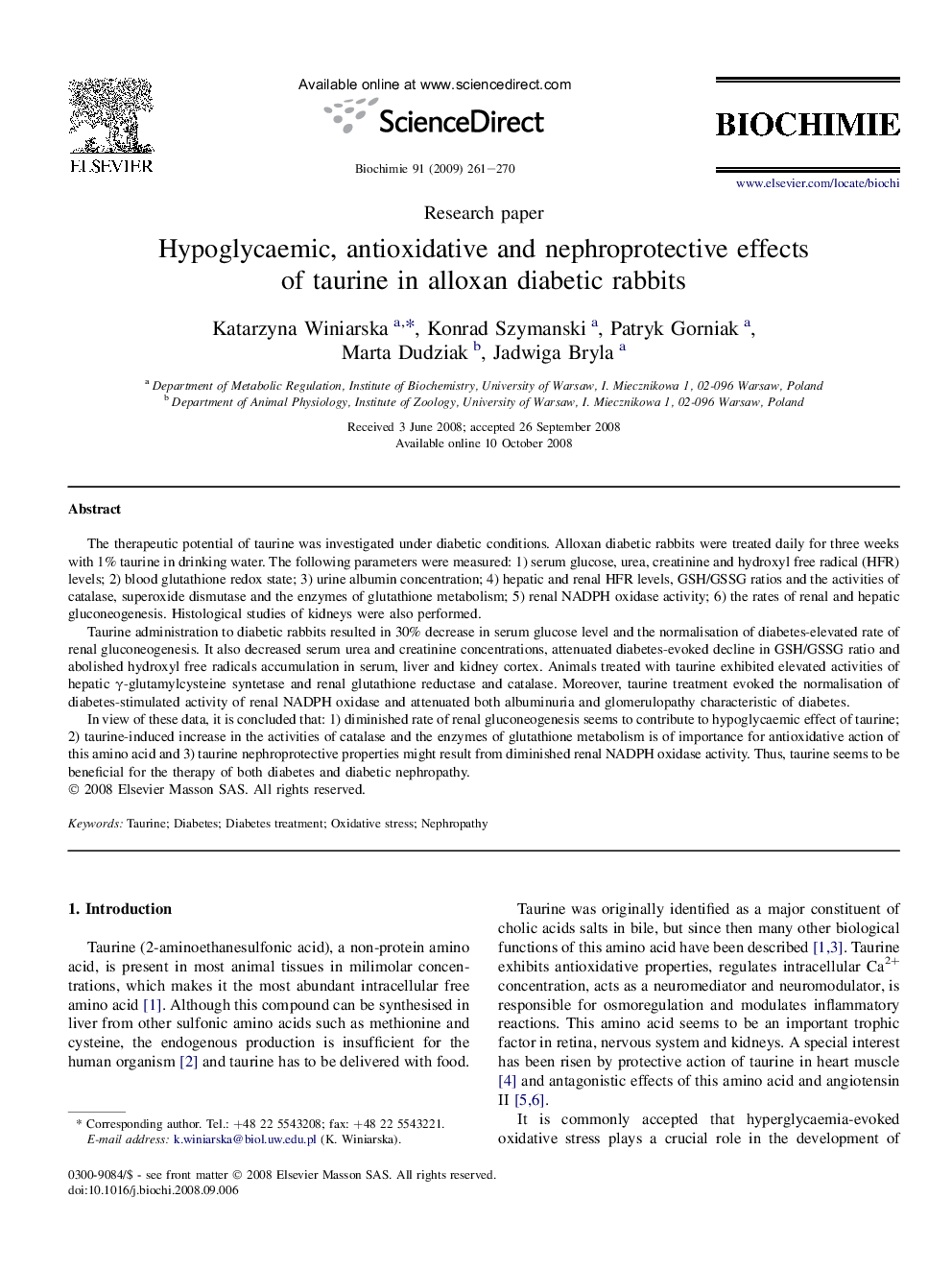| Article ID | Journal | Published Year | Pages | File Type |
|---|---|---|---|---|
| 1952737 | Biochimie | 2009 | 10 Pages |
The therapeutic potential of taurine was investigated under diabetic conditions. Alloxan diabetic rabbits were treated daily for three weeks with 1% taurine in drinking water. The following parameters were measured: 1) serum glucose, urea, creatinine and hydroxyl free radical (HFR) levels; 2) blood glutathione redox state; 3) urine albumin concentration; 4) hepatic and renal HFR levels, GSH/GSSG ratios and the activities of catalase, superoxide dismutase and the enzymes of glutathione metabolism; 5) renal NADPH oxidase activity; 6) the rates of renal and hepatic gluconeogenesis. Histological studies of kidneys were also performed.Taurine administration to diabetic rabbits resulted in 30% decrease in serum glucose level and the normalisation of diabetes-elevated rate of renal gluconeogenesis. It also decreased serum urea and creatinine concentrations, attenuated diabetes-evoked decline in GSH/GSSG ratio and abolished hydroxyl free radicals accumulation in serum, liver and kidney cortex. Animals treated with taurine exhibited elevated activities of hepatic γ-glutamylcysteine syntetase and renal glutathione reductase and catalase. Moreover, taurine treatment evoked the normalisation of diabetes-stimulated activity of renal NADPH oxidase and attenuated both albuminuria and glomerulopathy characteristic of diabetes.In view of these data, it is concluded that: 1) diminished rate of renal gluconeogenesis seems to contribute to hypoglycaemic effect of taurine; 2) taurine-induced increase in the activities of catalase and the enzymes of glutathione metabolism is of importance for antioxidative action of this amino acid and 3) taurine nephroprotective properties might result from diminished renal NADPH oxidase activity. Thus, taurine seems to be beneficial for the therapy of both diabetes and diabetic nephropathy.
